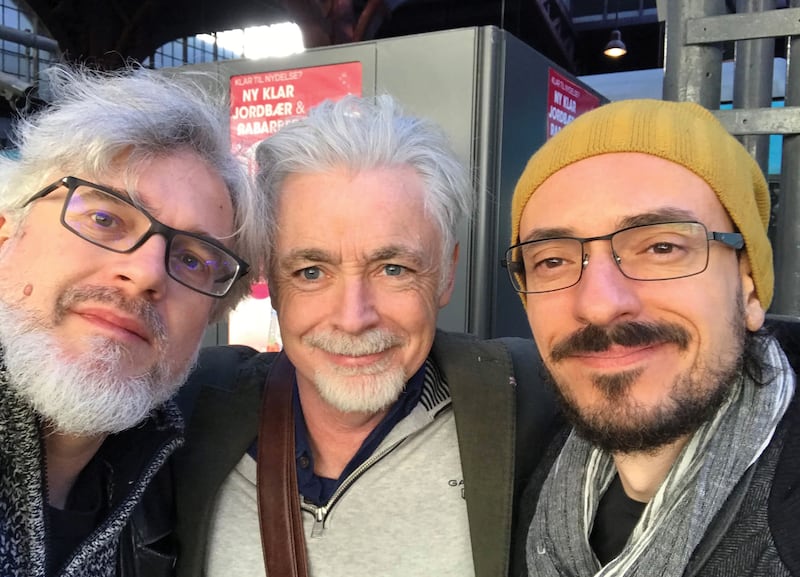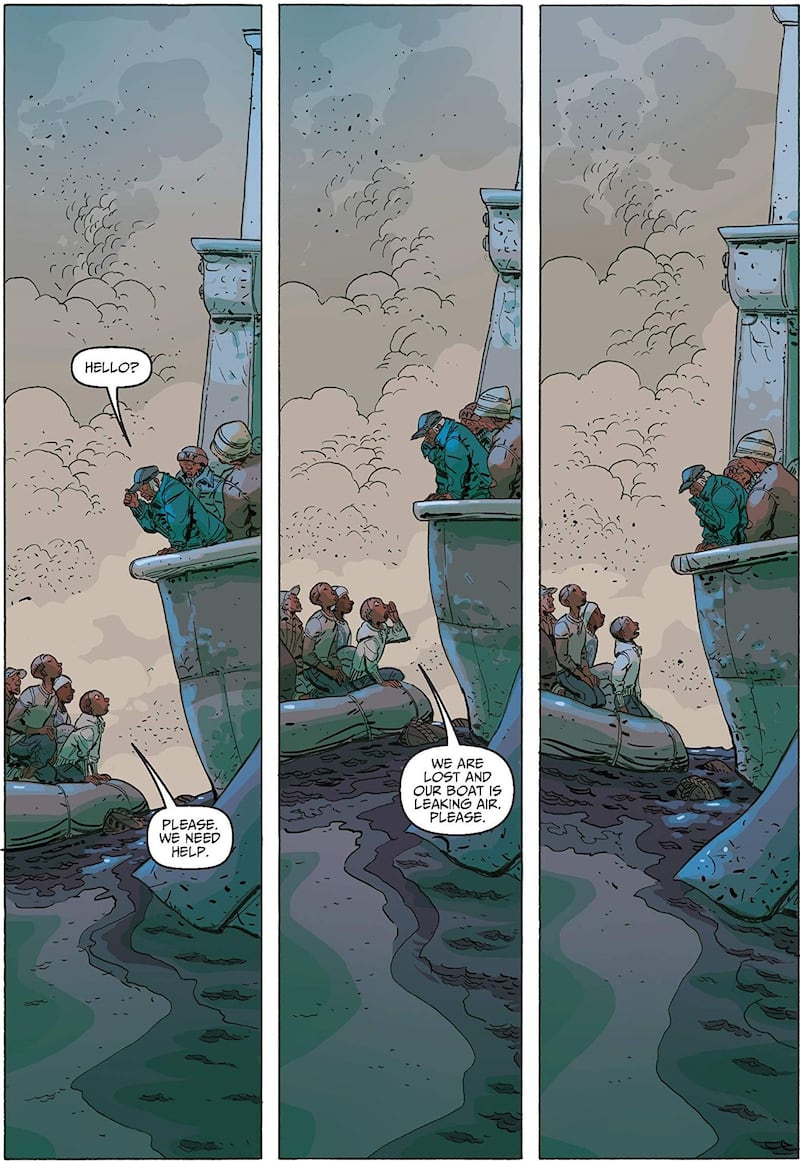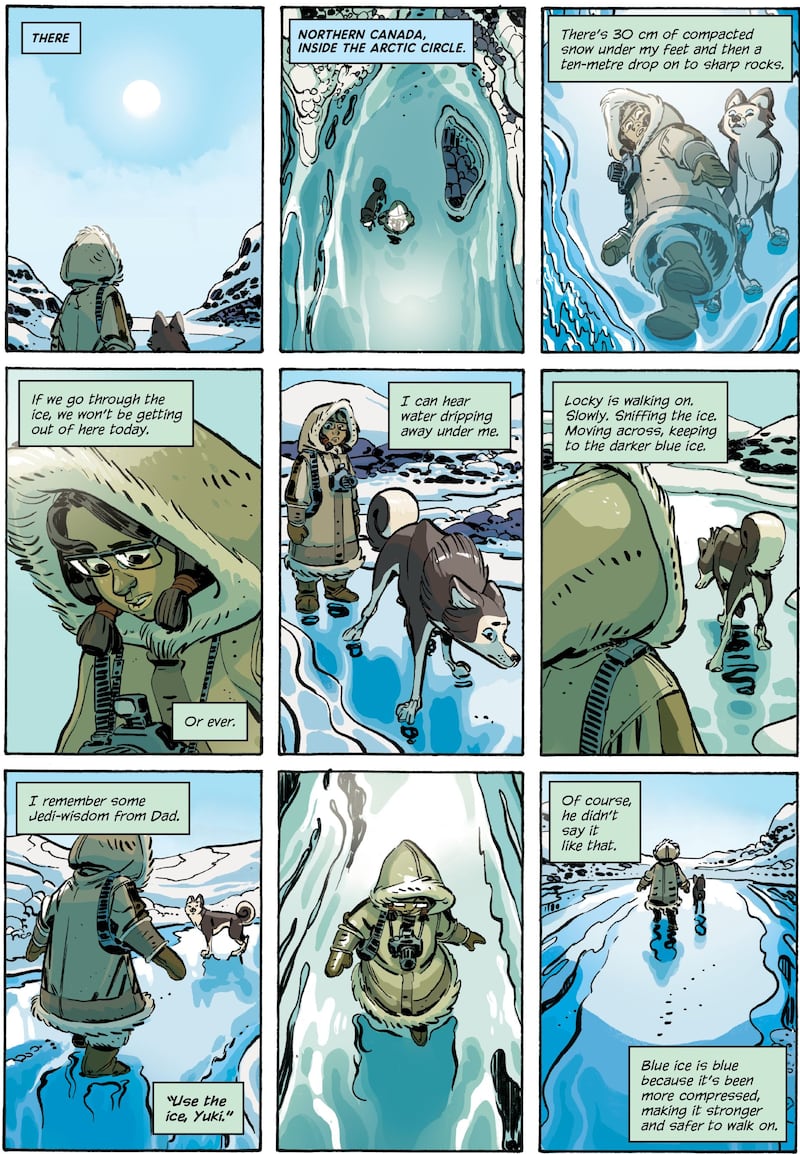It is more than 15 years since Eoin Colfer and Andrew Donkin first worked together. The authors shared an agent and at industry events found themselves gravitating towards each other, bonding over a mutual love of comic books. “Everyone would be sitting around talking about the latest Philip Pullman,” Donkin says, “and Eoin and I would be in the corner talking about Batman.”
During one of those social gatherings Donkin suggested that Colfer should adapt his fantasy series Artemis Fowl into graphic form. “I thought it would work really well,” Donkin says. “It is such a visual story; there is a lot of action; the storytelling doesn’t just take place in people’s heads.” But Colfer wasn’t particularly interested. He was a big fan of graphic novels but “there wasn’t really the same interest in the form that there is now,” he says. “There was still a bit of stigma attached to it.”
[ Eoin Colfer: ‘Humour defines me ... I’m obsessed with it’Opens in new window ]
When Disney bought the film rights to Artemis Fowl, in the mid-2000s, it suggested Colfer might consider reimagining the story as a comic book while the film went into development. Colfer knew “exactly the right guy for the job”. Donkin, who had made his name as a writer with DC Comics, came on board, with the Italian artist Giovanni Rigano creating the artwork. Artemis Fowl fans were thrilled to see images from the book for the first time, while new readers moved from the graphic adaptations to the novels.

The trio, meanwhile, had established an easy rapport in the process and were keen to continue their creative relationship after the series of Artemis Fowl adaptations. “Basically, we really enjoyed each other’s company,” Donkin says, “and we just wanted to keep on working together.”
RM Block
Colfer and Donkin are speaking from their Zoom rooms in Dublin and London. Colfer’s backdrop, fittingly, features one of Rigano’s portraits of Artemis in a large framed reproduction. Behind Donkin a shelf is lined with miniature Tardises (he was a writer for the Dr Who comic series), while a reproduction of Captain America’s shield speaks to his Marvel collaborations. The cover image for Illegal, their 2017 collaboration with Rigano, is proudly displayed in both rooms, providing a visual prompt for our conversation about their new book, Global, which follows a similarly socially conscious format.
“It was Andrew’s idea, I think, that we use our platform and praxis to try and write something with a social conscience,” Colfer says. Previously, “some schoolteachers, librarians [and] parents saw comics as a lesser form of literature, but they are actually literature and art, and a great stepping stone for reluctant readers to get interested in books.”
Graphic novels and comics “make your brain do more work than a normal book”, Donkin says. “In a novel you could just say in a few words – ‘the man gets up from the desk and goes out the door’ – but in a graphic novel that takes place across four panels, and it is up to the reader to fill in any gaps themselves. It is not a lazy option. It needs your brain to help tell the story.”
Graphic novels are also visually attractive for younger readers – a fact that has helped Colfer, Donkin and Rigano to use their work to introduce serious topics. Rigano’s art for Illegal has a distinctive blue-toned palette and vivid, expressive faces that pull the reader in. “It’s like the Trojan horse,” Colfer says. “You are wrapping these true, important stories in a cracking adventure package, because we know that if you want to get kids to the end of a sizeable book it needs to be interesting.”

Illegal, whose theme is forced migration, was driven by a desire to transform factual information into a compelling narrative package. When they started working on it, Donkin says, illegal migration “wasn’t the big story it became”. The trio were inspired by a small article about a boat disappearing in the Mediterranean, but when they looked for reports that explained what happened next “there was no follow-up, so we decided to follow it up ourselves”.
The writers worked with two refugee charities to make sure the book, which centres on a young Nigerian boy’s journey to England, was as accurate as possible. Donkin says: “We didn’t want people to think it was one of those crazy fiction stories, that they would finish the book thinking, ‘Nobody could do that perilous crossing and survive,’ because people do and did; children did. It was really important that we get it right.”
The easiest way to do that, Colfer says, was to invent nothing, “so that we could say, ‘everything in the book is true. This has happened, is still happening to children every day.’ The sad thing is that it has slipped from the headlines, even though it is as bad as it has ever been.”

The trio have taken a similar approach to Global, their new collaboration, which explores the climate crisis through the eyes of two children on either side of the globe whose lives are being dramatically affected by environmental change. Sami’s home, in the Bay of Bengal, has been swept away by rising sea levels, while in the Arctic Circle Yuki finds herself confronted by a strange creature, the grolar bear – a hybrid of a polar and a grizzly – born from environmental adaptation to the melting landscape. Donkin says the subject chose itself. “Global warming, climate change, is such a huge thing all over the world, whether that’s kids having climate anxiety or kids who are dealing with the consequences of what’s happening.”
“Every single element of environmental change in Global has already happened and been documented. We needed to make sure of that, so that there would be no wriggle room for deniers to say we were catastrophising,” says Colfer.
Donkin says that, in the media, “It is often the case that adults sit around talking about what might happen, but we wanted to look at what is happening today. There are millions of kids on the frontline of climate change right now. This isn’t a ‘what might happen’ theory. Climate change is having an impact on their lives already. Change needs to happen today, not in the future.”

Colfer says that crafting accessible human stories around the subject allows young readers to invest in and learn about climate change, empowering them to see what they can do to help. Colfer’s background as a primary teacher taught him that “when children are worried they like things to be explained to them, so that they can see what they can do themselves”. A nonfiction comic strip at the end of the book serves that function, grounding Sami and Yuki’s story in fact and suggesting ways for readers to get involved in helping to save the planet.
“Young people might walk, take the bus, recycle, plant a tree if they can. There are little changes they can make to contribute,” Colfer says.
He adds that writing the books has made the three of them feel as if “we are doing a bit ourselves, by educating, entertaining – that’s our superpower – and that helps to alleviate our own anxiety”.
That anxiety extends to the trio’s awareness of the publishing industry’s impact on the environment. Donkin says, “People would rightly point out that cutting down trees to make books is hypocritical.” Colfer agrees. “A book has its own carbon footprint. It takes energy to make a book. But there is always a cost of doing things. It is tricky: balancing what you can do as an individual with what big companies and corporations need to do. Overall, Global is about getting the message out there, raising awareness with young people, teenagers. We just hope that the benefits in the long term will outweigh the short-term cost.”
Global is published by Hodder Children’s Books. Eoin Colfer will be reading from Global and some of his other books at International Literature Festival Dublin on Saturday, May 27th






















